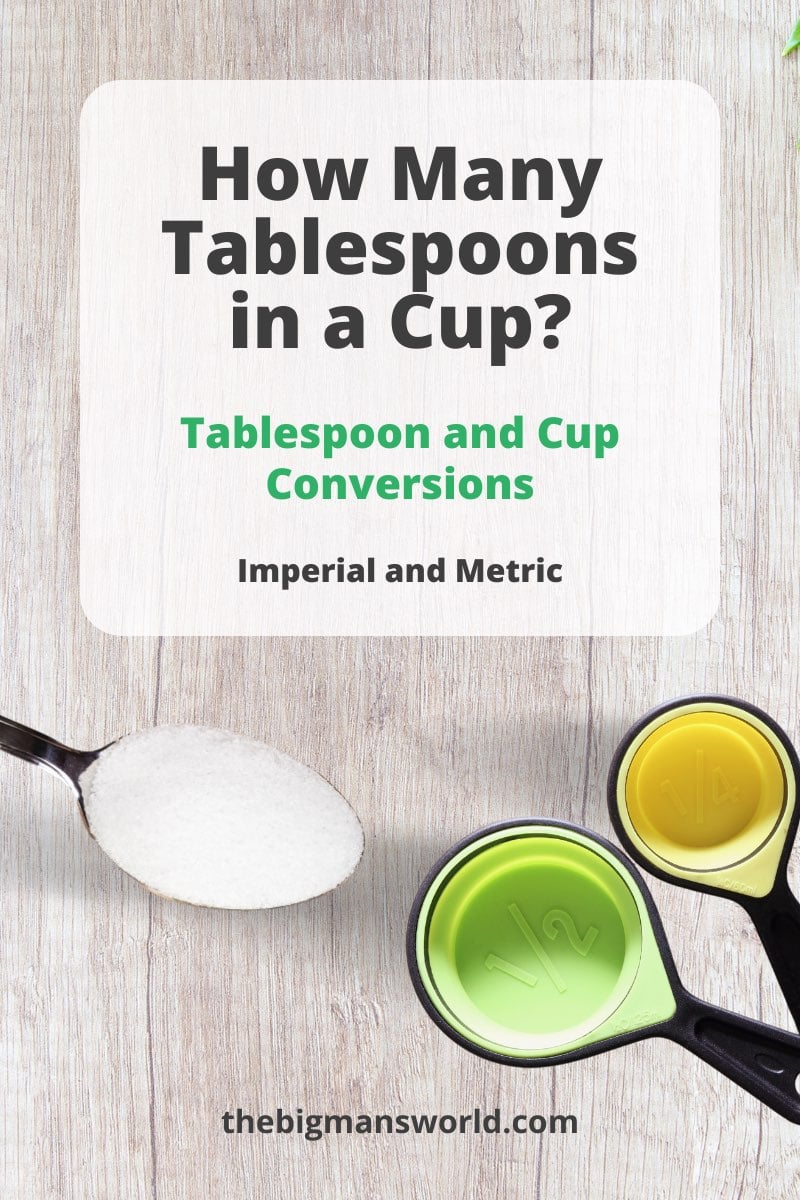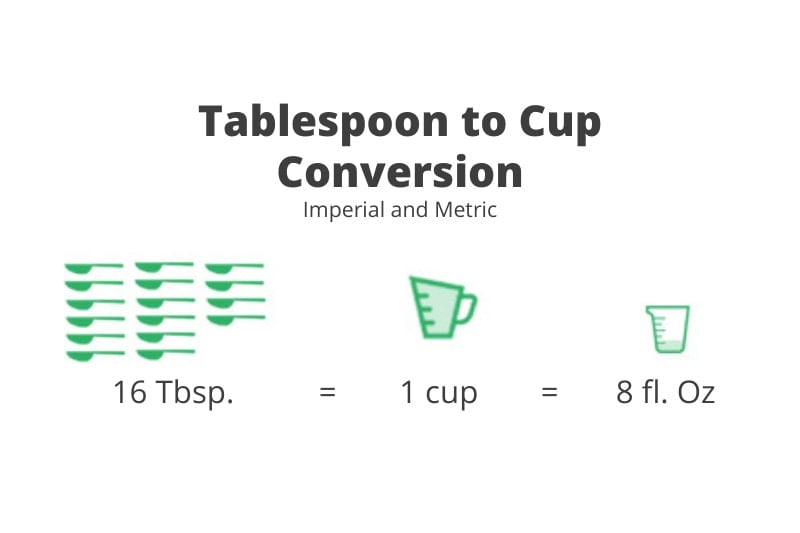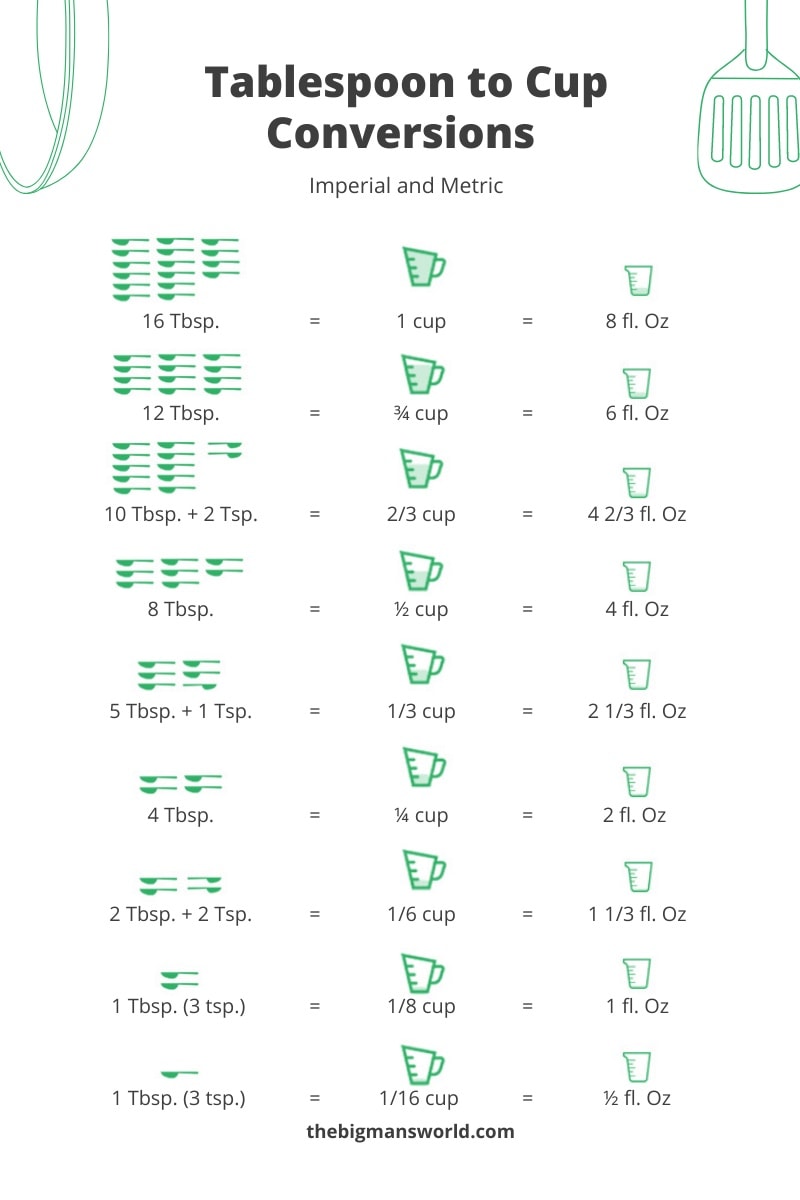If you’ve ever been in a position where you don’t have measuring cups on hand, knowing the tablespoon equivalent will come in handy. This is also useful for halving or doubling recipe serve sizes.
Basic tablespoon to cup conversions (tbsp to cup)
The following chart uses the above formula to provide a list of ratios that will allow you to easily convert any quantity of cups into tablespoons, or the other way around. Use this simple conversion next time you find a recipe in cups and want to convert it to tablespoons (tbsp) and vice versa. For example, when you have to add 4 tablespoons in a recipe, it will be equal to 1/4 of a cup.
The US Customary System (USCS)
These conversions are based on the US customary system (USCS) of measurement which is primarily used in the United States. While it has many similarities to the British Imperial system, it is not completely identical. It is safe to say a majority of the recipes that you access online use US customary measurements, so understanding the conversions will enable you to follow the recipe properly and accurately.
1 US Cup = 236.59 milliliters (ml) 1 US Cup = 16 US tablespoons (tbsp)
Metric versus Imperial cups
It is always important to understand where you recipe originated to ensure accurate measurements are used. Outside of the US, many other countries have adopted the Metric system of measurement. The fundamental difference between these two systems is their units of measurement. E.g., inches versus centimeters. Cups and tablespoons are used across both systems but can have slightly different sizes. For example, if you make a chocolate cake using the US customary system then try it with the metric system, the results will not be exactly the same. A metric tablespoon is considered slightly larger than an imperial tablespoon, as is a metric cup slightly larger than a US customary cup. 1 US Cup = 16 US tablespoons = 236.59 milliliters (ml)1 metric Cup = 15 metric tablespoons = 250 milliliters (ml) (international)
Can I use cups to measure dry and wet ingredients?
Dry and wet measurements are the same when measuring in cups, tablespoons, and teaspoons, as these are all forms of volumetric measurement. When measuring out liquid ingredients, a measuring cup is a recommended option, as it will save you from unexpected spillovers on your kitchen counter. However, when measuring ounces, dry and wet measurements will not be the same. Ounces measure the weight of an ingredient, and that differs depending on the ingredient.
How much is a dash or pinch?
The terms like dash, pinch, and smidgen are often used in cooking/recipes, and often refer to the same thing.
Pinch: equal to 1/8 of a teaspoon and is used for dry ingredients, like salt, pepper, or spices. Dash: used while measuring liquids and is equal to 1/8 of a teaspoon. Smidgen: a negligible amount that it’s nearly equal to nothing, about 1/32 of a teaspoon.
What is a cup?
A cup is one of the easiest and most practical units of volume measurement established for cooking and baking, although the exact size of “cups” can vary slightly from country to country. In the US, 1 cup represents half a US pint or 8 fluid ounces. This is also referred to as the US legal cup for nutritional labeling and portion sizes, standardized at 240 milliliters (ml). Internationally, most countries have adopted the metric system of measurement, where a cup is slightly larger, at 250 milliliters (ml).
More cooking resources
How many grams in an ounce How many teaspoons in a tablespoon How many quarts in a gallon How many cups in a quart How many grams in a cup


